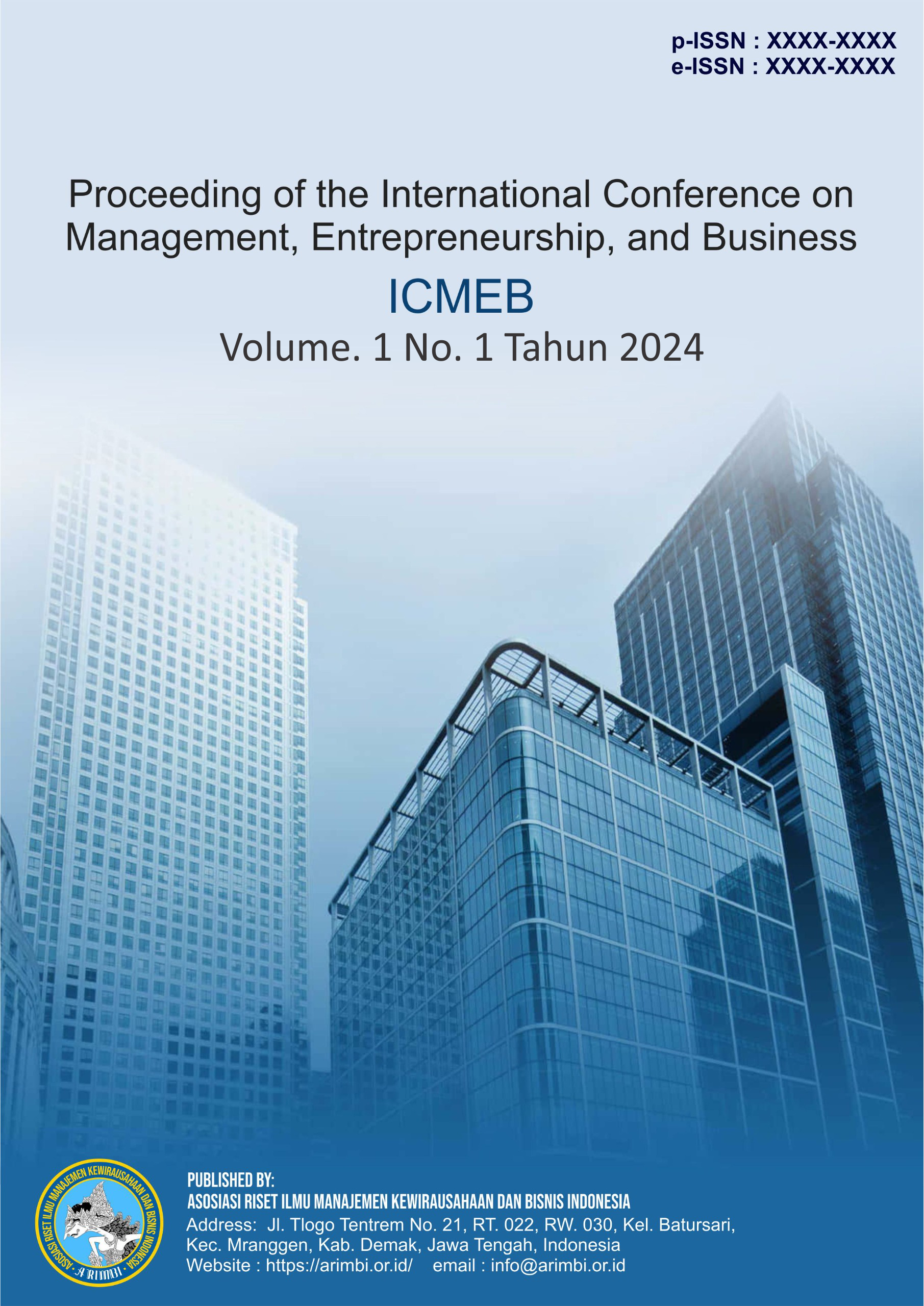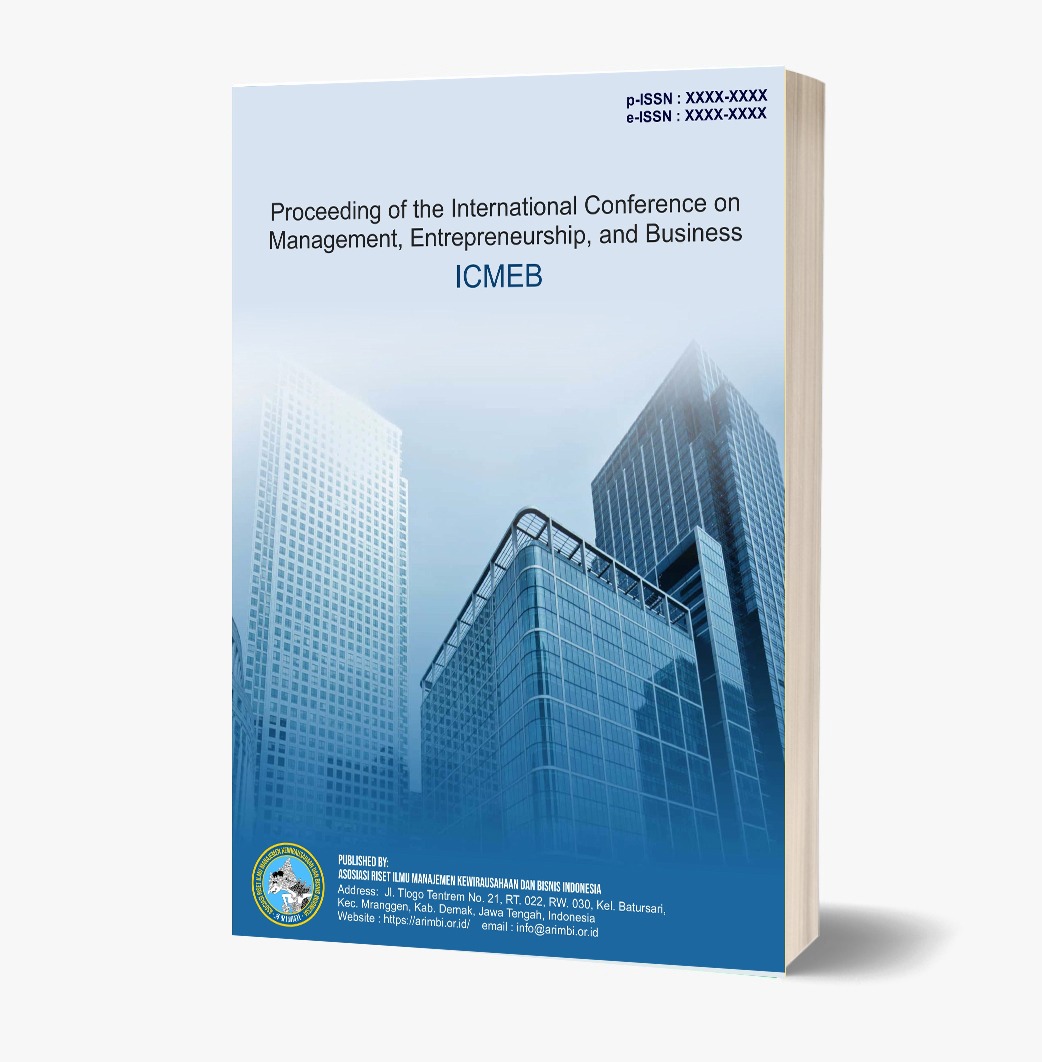Strategies for Enhancing the Competitiveness of Leather Bag Industry
DOI:
https://doi.org/10.61132/icmeb.v1i1.117Keywords:
Strategy, SWOT, AHPAbstract
The leather industry in numerous countries, including Indonesia, continues to encounter significant challenges that impede its competitiveness in both domestic and international markets. Abekani Leather, a small and medium-sized enterprise (SME) operating within the leather industry in Yogyakarta, is one such entity striving to remain competitive against other players in the sector. Based on interviews conducted with the owner of Abekani Leather, it was revealed that annual sales from 2018 to 2023 have declined by approximately 10-15%. This downturn is primarily attributed to the increasing presence of competitors offering similar products within the leather industry. Based on the AHP weighting results using the Super Decision software, it can be concluded that the alternative strategy SO-4 (Utilizing social media for promotions in various media by utilizing community relationships) has the highest weight value of 0.54, meaning this strategy should be prioritized first to achieve Abekani's objectives.
Downloads
References
Amri, A. (2020). Dampak Covid-19 Terhadap UMKM di Indonesia. BRAND Jurnal Ilmiah Manajemen Pemasaran. Vol 2 (1). 123–131 pp.
Bappeda Daerah Istimewa Yogyakarta https://bappeda.jogjaprov.go.id/dataku/data_dasar/index/107-umkm
Greenbaum, T. L. (2000). Moderating Focus Groups: A Practical Guide for Group Facilitation. SAGE Publications.
Hidayat, A., Supriyadi, W., & Amin, M. (2020). Pengaruh Digital Marketing terhadap Daya Saing Industri Kulit di Indonesia. Jurnal Pemasaran Digital, 7(1), 22-33.
Hitt, M. A., Ireland, R. D., & Hoskisson, R. E. (2017). Strategic Management: Competitiveness and Globalization (12th ed.). Cengage Learning.
Namugenyi, C., Nimmagadda, S. L., & Reiners, T. (2019). Design of a SWOT analysis model and its evaluation in diverse digital business ecosystem contexts. Procedia Computer Science, 159, 1145–1154. https://doi.org/10.1016/j.procs.2019.09.283
Narto. (2021). Strategi Pemasaran untuk Penguatan Daya Saing Usaha Kecil dan Menengah (UKM) Sambel Instan Pasca Pandemi Covid-19 (Studi Kasus CV Progressive Gresik). Jurnal Rekayasa Sistem Dan Industri, 8(01), 49–54.
Nugroho, S. (2020). Strategi Pemasaran Digital dalam Meningkatkan Daya Saing Produk Kulit. Jurnal Pemasaran Modern, 12(4), 33-41.
Putra, A. W. (2019). Analisis SWOT dalam Pengembangan Ekspor Produk Kerajinan Kulit. Jurnal Ekonomi dan Bisnis Internasional, 3(2), 71-80.
Rangkuti, F. (2013). SWOT Analysis: Teknik Membedah Kasus Bisnis. Jakarta: Gramedia Pustaka Utama.
Russell, S.N., & Millar, H. H. (2014). Competitive priorities of manufacturing firms in the Caribbean. IOSR Journal of Business and Management, 16(10), 72-82.
Saaty, T. L. (2008). Decision Making with the Analytic Hierarchy Process. International Journal of Services Sciences, 1(1), 83-98.
Sari, N., Wijaya, F., & Sulistyo, A. (2021). Inovasi Produk dan Strategi Pemasaran Produk Kulit Ramah Lingkungan. Jurnal Pemasaran Internasional, 8(2), 98-110.
Sulistiyani, & Pratama, A. (2020). Analisis Strategi Pemasaran Dalam Upaya Peningkatan Daya Saing Umkm. Jurnal Pemasaran Kompetitif, 3(2), 31–39.
Wahyuni, D. (2022). Pengembangan Strategi Ekspor Produk Kerajinan melalui AHP, SWOT, dan QSPM. Jurnal Manajemen Internasional, 4(1), 58-72.
Wang, H., Lee, C., & Chen, S. (2015). Optimizing Marketing Strategies with AHP in the Competitive Tech Industry. Technology Marketing Journal, 14(1), 31-45.






